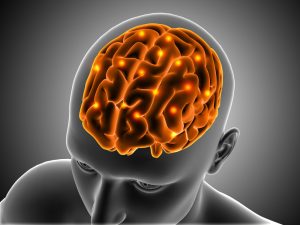As an attorney, you see your client walking into a courtroom claiming a traumatic brain injury from a car accident. The client complains about memory loss, confusion, and headaches, and the stakes are high, as fair compensation could be on the line. But here’s the real question: How do you prove what’s going on inside someone’s brain? That’s where a neuroradiologist expert witness steps in and turns complex brain scans into courtroom evidence.
Table of Contents
ToggleWhy Brain Injuries Are Tricky in Legal Cases?
Neurological injuries differ from other types of injuries, as they are often invisible to the naked eye. Unlike a broken leg or bruised ribs, there’s no obvious external proof, and that’s why courts rely on expert testimony, especially from a neuroradiology expert witness, to confirm or debunk these claims. Whether it’s a personal injury lawsuit, criminal case, or medical malpractice trial, these specialists have the credibility to make or break a case.
Who Are Neuroradiologists, Anyway?
You can think of neuroradiologists as detectives of the brain. They are professionals who specialize in interpreting images of the brain, spine, and nervous system using tools like MRI, CT, and PET scans. However, it’s not just about reading images; they understand how these findings correlate with clinical symptoms, and more importantly, how they stand up under legal scrutiny.
What Do They Actually Do in Court Cases?
Let’s break it down. When a claim is made, for example, for post-concussion syndrome or a stroke after surgery, a neuroradiologist is brought in to analyze the imaging studies. Here’s what they look for:
- Structural damage like bleeding, swelling, or lesions
- Subtle abnormalities that might suggest evidence of traumatic brain injury (TBI)
- Evidence of degeneration versus trauma (was it a result of the accident or pre-existing conditions?)
- Consistency between the reported symptoms and the imaging findings
The testimony of a neuroradiology professional doesn’t just amount to an opinion; it is objective evidence backed by years of training and scientific data.
Validating v/s Refuting Claims
This is where things actually get interesting. In some cases, the scans clearly support the claim, and a neuroradiologist might say, “Yes, the findings on the susceptibility weighted images are consistent with a traumatic brain injury.” This strengthens the plaintiff’s case.
However, in other instances, there might be no radiological evidence to support the symptoms. In these cases, the expert might testify, “The imaging is normal, and there are no findings to indicate a brain injury.” This could seriously undermine the credibility of the claim.
In court, neuroradiologists are expected to present complex data in a simplified manner for judges and juries. They might use annotated brain scans, 3D models, or analogies like “It’s like seeing a bruise on the brain.” Their job is to illuminate the truth; and to make the truth understandable.
Conclusion
About 400,000 personal injury claims are filed annually across the United States.
(Source: https://www.clio.com/blog/personal-injury-law-statistics/.)
Neuroradiologist expert witnesses serve as the bridge between medicine and justice, lending scientific credibility to neurological claims while ensuring that verdicts are based on facts rather than emotions. Seeking a seasoned, reliable, and unbiased expert witness with experience in neurological disorders to help translate facts into actionable insights? Reach out to the team at Neuro Experts today!








